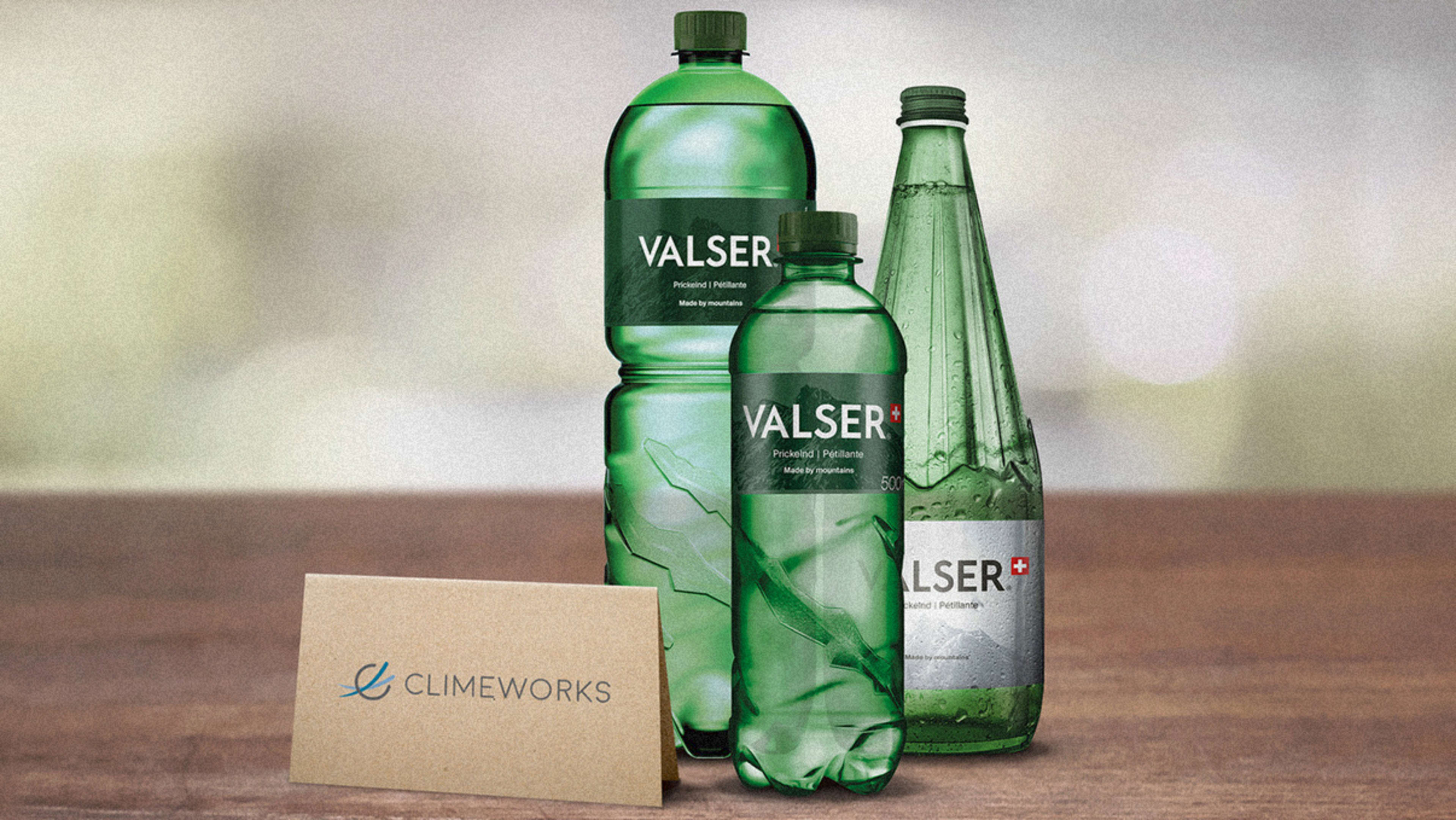If you walk into a supermarket in Switzerland sometime early next year and buy a bottle of Valser–a brand of sparkling water owned by Coca-Cola–the fizz inside might have come from CO2 sucked from the atmosphere. Coca-Cola HBC Switzerland, the bottling plant that makes the drinks, just partnered with Climeworks, one of the world’s pioneers of direct air capture of carbon dioxide, as a new supplier.
At its plants, Climeworks uses stacked shipping containers filled with technology that pulls air inside and through filters that capture CO2 like an ultra-powerful tree. Once a filter is full, the collector is heated, releasing the gas in a pure form that can be injected deep underground for storage–one way to help begin to address the fact that the amount of carbon dioxide in the air is higher than it has been at any point in the last 400,000 years–or used by manufacturers. The company’s first partnership was with a nearby greenhouse that used the CO2 to help plants grow faster, and the beverage industry was the natural next step.
“The beverage industry is among the only existing markets currently using CO2,” says Christoph Gebald, cofounder and director of the startup. Other applications are coming, from making carbon-neutral fuel or concrete to making plastic, shoes, or even fish feed. But greenhouses and the soda industry are using CO2 at relatively large scales now.
If you put CO2 in soda or mineral water, of course, it’s not like sequestering it underground: When you open the bottle, the fizz comes out. And though the total global demand from soda and food companies for the product is around 6 million tons a year, the latest report from the Intergovernmental Panel on Climate Change suggests that we may need to remove around 10 billion tons of carbon dioxide from the atmosphere every year this century to help prevent the worst impacts of climate change. But by beginning with the soda industry, Climeworks hopes it can scale up its technology.
“The beverage industry is really the bridge from today–no existing market–to enabling us to further work down our cost curve and industrialize the technology,” says Gebald. “It’s really the missing bridge between startups and, one day, climate-relevant scale to remove carbon from the air.”
Right now, the industry typically sources CO2 from chemical factories that use natural gas as a feedstock. In some cases, bottlers use “natural” CO2, or CO2 taken from underground, where it otherwise would have been safely sequestered. Coca-Cola HBC, which was named the beverage industry leader on the Dow Jones Sustainability Index several years in a row, was interested in a more sustainable approach. “Sustainability is something at the core of their DNA,” says Gebald. “Therefore, sourcing CO2 from the atmosphere seemed like a logical step to do. Maybe there are other bottlers that are not that sustainability-driven but more price-driven, and maybe for them our solution is a little more in the future when prices come down.”
Sucking CO2 from the atmosphere is more expensive than from other sources, though there are remote bottling plants–in the Australian outback, for example–that currently pay much more for the standard product, and where a local carbon-sucking plant might make sense. “Very soon, as we move down with the cost, more and more sites are attractive from a purely economic point of view,” says cofounder and director Jan Wurzbacher. After capturing the CO2, the company takes the additional step of an additional purification and testing process for the beverage industry.
Ultimately, the new partnership is one step toward the company’s long-term vision of building its plants at a massive scale. To remove 1% of the world’s CO2 emissions, it calculates, would take around 250,000 carbon removal devices. It’s a staggering number. But it’s something that climate scientists believe will need to happen. To help keep global warming under the crucial number of 1.5 degrees Celsius, the world will have to go beyond even a shift to a zero-carbon economy–electric cars and renewable energy are one piece of the solution, but there’s already so much excess CO2 in the atmosphere that we also need negative-emissions technology. As the climate changes and deforestation continues, trees are less up to the job. As Climeworks’ technology pulls CO2 out of the air, much of it may have to be stored underground. The company has already proved this works in Iceland, where a plant captures CO2 from a geothermal plant, mixes it with water, and injects it underground, where it turns safely into stone.
Recognize your brand’s excellence by applying to this year’s Brands That Matter Awards before the early-rate deadline, May 3.
